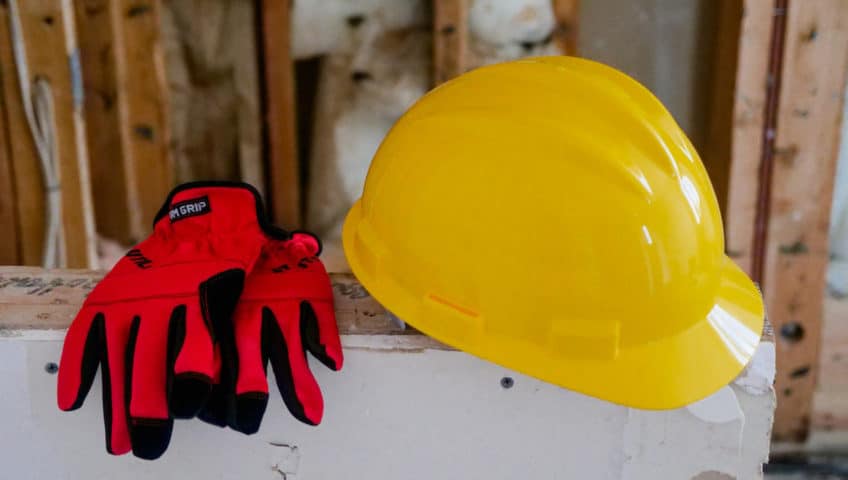As Canadian pipeline workers fulfill their vital roles amidst various challenges and risks, contractors should be prioritizing robust safety measures. At the heart of a commitment to safety lies the adoption of Personal Protective Equipment (PPE), serving as the first line of defense against potential hazards within the pipeline industry.
Learn more about pipeline personal protective equipment, proactive safety practices, and tips for PPE implementation within the pipeline industry.
Types of PPE Required for Pipeline Work in Canada
Head Protection
- Hard Hats: A fundamental requirement for all pipeline workers, hard hats provide crucial protection against falling objects and head impact hazards. These sturdy helmets are designed to withstand impact and provide a reliable shield for the head.
- Helmets with Face Shields: In situations where workers are exposed to potential face and eye hazards, such as flying debris or chemical splashes, helmets equipped with face shields offer an additional layer of comprehensive protection.
Eye and Face Protection
- Safety Glasses: Specially designed safety glasses are indispensable for shielding the eyes from particles, dust, and other airborne debris commonly encountered in pipeline construction and maintenance activities.
- Goggles: In environments where there is a risk of chemical exposure or extreme atmospheric conditions, goggles provide a secure seal around the eyes, safeguarding them from hazardous substances or harsh elements.
Hand & Foot Protection
- Gloves: The hands of pipeline workers are safeguarded by a variety of gloves tailored to specific hazards. Cut-resistant gloves shield against sharp objects, while insulated gloves provide protection in cold weather conditions. Chemical-resistant gloves, on the other hand, are crucial for handlers of hazardous substances, ensuring safe handling and prevention of skin exposure.
- Steel-toed Boots: Offering vital protection against heavy objects, compression, and puncture hazards, steel-toed boots are a non-negotiable component of the PPE ensemble for pipeline workers.
- Slip-resistant Shoes: With the terrain and environmental conditions often posing slip hazards, slip-resistant shoes enhance stability and reduce the likelihood of workplace accidents.
Body Protection
- High-Visibility Clothing: Essential for workers involved in pipeline construction near roadways or areas with vehicular traffic, high-visibility clothing and reflective vests ensure visibility in various lighting conditions, reducing the risk of accidents and enhancing overall safety.
- Flame-resistant Clothing: In environments where there is a potential for exposure to fire or flammable materials, flame-resistant clothing provides a vital layer of protection, mitigating the risk of burns and other thermal injuries.
Importance of Proper Usage of Personal Protective Equipment
Ensuring pipeline workers use their Personal Protective Equipment (PPE) correctly helps everyone safe on the job. Choosing the right PPE gear for their tasks, allows workers to significantly lower the risk of getting hurt and contribute to a culture of safety across the pipeline industry. This not only helps Canadian pipeline companies comply with health and safety regulations but also minimizes the chances of accidents. It's all about creating a work environment where everyone can feel secure while doing their jobs.
Benefits of Using Appropriate PPE
- Enhanced Protection Against Hazards: Using appropriate PPE provides a necessary layer of defense against various occupational hazards such as impact, chemical exposure, or airborne particles.
- Prevention of Serious Injuries: Proper utilization of PPE significantly reduces the risk of serious injuries by acting as a barrier between the worker and potential workplace dangers.
- Increased Confidence and Productivity: Equipping workers with suitable PPE instills a sense of confidence, knowing that they are safeguarded against potential risks.
Best Practices for Using PPE in Pipeline Work
- Conduct PPE Assessments: Regular and thorough assessments are crucial for identifying the specific risks and hazards present in the workplace. It involves evaluating the tasks being performed, the surroundings, and any potential sources of danger to determine the appropriate PPE needed for protection.
- Providing Adequate Training on PPE Usage: Training sessions should be conducted to educate workers on the proper usage, fit, and maintenance of PPE. This ensures that employees understand the importance of using the equipment correctly, leading to enhanced safety and risk mitigation.
- Regular Inspection and Maintenance of PPE: Periodic inspections and maintenance of PPE are essential to ensure that the equipment remains in good condition and continues to provide the necessary protection.
- Encouraging a Safety Culture: By encouraging open communication, reporting of safety concerns, and leadership support, employees are more likely to prioritize the use of PPE and contribute to a safer work environment overall.
Ensure Worker And Workplace Safety With Industrial Compliance & Safety
Personal protective equipment is a non-negotiable on any job site, especially for pipeline workers in Canada. Pipeline industry business owners need to be able to select the right equipment for the job and be able to inspire their crews to use it properly. Regulations and industry best practices can change at any time as technology advances and new equipment is implemented. Stay on top of safety compliance with the help of an experienced safety compliance consultant, Industrial Compliance & Safety.
We offer compliance consultation on a global scale. Whether your company is based in another country, or if you are looking to expand your company from national to international, we’ve got you covered with our global industrial safety services. Contact us today for safety compliance support with some of the industry's top certification platforms including ISNetworld®, Avetta®, Veriforce®, PEC Premier® and others.
Ready To Get Compliant Today?
Call us or complete the form below!





